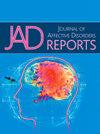Living alone and 12-month major depressive episode in men and women from 2005 to 2021
Q3 Psychology
引用次数: 0
Abstract
Objective
The objective of the present study is to determine whether living alone is associated with major depression among men and women after adjusting for sociodemographics known to be associated with depression.
Methods
Data from the 2005, 2010, 2017, and 2021 nationally representative cross-sectional French Health Barometer surveys were pooled covering n = 71,168 adults ages 18 to 75. Logistic regressions were performed to identify associations between 12-month major depressive episode and living alone overall, and stratified by sex.
Results
An increasing portion of adults 18 to 75 lives alone in France: 11.2 % in 2005, 16.7 % in 2010, 17.4 % in 2017, and 19.0 % in 2021. Among men, in our study, those living alone represented 10.3 % in 2005 to 20.0 % in 2021, among women, 12.1 % in 2005 and 18.0 % in 2021. Men are more likely than women to live alone before age 55, the reverse is true thereafter. In parallel, the prevalence of depression has increased from 8.0 % in 2005 to 13.3 % in 2021. In multivariable models adjusting for age, sex, education, occupation, income level, urbanicity and study wave, living alone was associated with higher odds of depression (AOR=1.50, 95 %CI=1.41–1.60). No significant interactions were found for living alone x sex, while living alone was significantly associated with depression only among those 25 or older.
Limitations
Cross-sectional surveys.
Conclusion
Living alone is becoming more frequent and is a strongly associated with major depression. This finding should raise attention to groups of men and women at increased risk of mental health problems.
2005年至2021年期间男性和女性独居和12个月重度抑郁症发作的情况
本研究的目的是在调整了已知与抑郁相关的社会人口统计学因素后,确定独居是否与男性和女性的重度抑郁有关。方法收集2005年、2010年、2017年和2021年具有全国代表性的法国健康晴雨表横断面调查的数据,涵盖年龄在18至75岁之间的71168名成年人。进行逻辑回归以确定12个月重度抑郁发作与总体独居之间的关联,并按性别分层。结果在法国,18 - 75岁的成年人独居的比例越来越高:2005年为11.2%,2010年为16.7%,2017年为17.4%,2021年为19.0%。在我们的研究中,男性独居者的比例从2005年的10.3%上升到2021年的20.0%;女性独居者的比例从2005年的12.1%上升到2021年的18.0%。男性在55岁之前比女性更有可能独自生活,55岁之后则相反。与此同时,抑郁症的患病率从2005年的8.0%上升到2021年的13.3%。在调整了年龄、性别、教育程度、职业、收入水平、城市化程度和学习浪潮的多变量模型中,独居与较高的抑郁几率相关(AOR=1.50, 95% CI= 1.41-1.60)。没有发现独居与性别之间有显著的相互作用,而独居与抑郁症的显著关联仅存在于25岁及以上的人群中。LimitationsCross-sectional调查。结论独居越来越频繁,且与重度抑郁症密切相关。这一发现应该引起人们对心理健康问题风险增加的男性和女性群体的关注。
本文章由计算机程序翻译,如有差异,请以英文原文为准。
求助全文
约1分钟内获得全文
求助全文
来源期刊

Journal of Affective Disorders Reports
Psychology-Clinical Psychology
CiteScore
3.80
自引率
0.00%
发文量
137
审稿时长
134 days
 求助内容:
求助内容: 应助结果提醒方式:
应助结果提醒方式:


